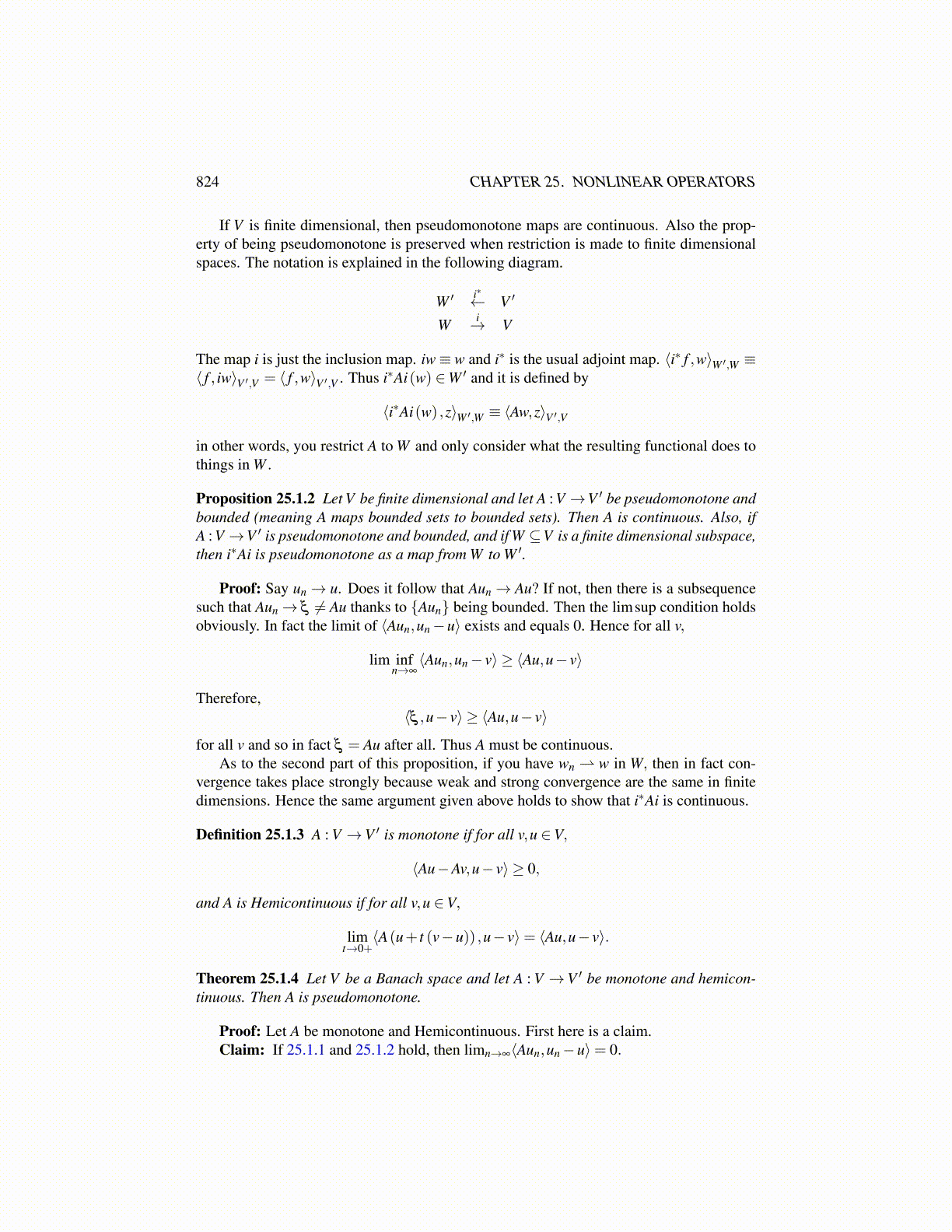
824 CHAPTER 25. NONLINEAR OPERATORS
If V is finite dimensional, then pseudomonotone maps are continuous. Also the prop-erty of being pseudomonotone is preserved when restriction is made to finite dimensionalspaces. The notation is explained in the following diagram.
W ′ i∗← V ′
W i→ V
The map i is just the inclusion map. iw≡ w and i∗ is the usual adjoint map. ⟨i∗ f ,w⟩W ′,W ≡⟨ f , iw⟩V ′,V = ⟨ f ,w⟩V ′,V . Thus i∗Ai(w) ∈W ′ and it is defined by
⟨i∗Ai(w) ,z⟩W ′,W ≡ ⟨Aw,z⟩V ′,V
in other words, you restrict A to W and only consider what the resulting functional does tothings in W .
Proposition 25.1.2 Let V be finite dimensional and let A : V →V ′ be pseudomonotone andbounded (meaning A maps bounded sets to bounded sets). Then A is continuous. Also, ifA : V →V ′ is pseudomonotone and bounded, and if W ⊆V is a finite dimensional subspace,then i∗Ai is pseudomonotone as a map from W to W ′.
Proof: Say un→ u. Does it follow that Aun→ Au? If not, then there is a subsequencesuch that Aun→ ξ ̸= Au thanks to {Aun} being bounded. Then the limsup condition holdsobviously. In fact the limit of ⟨Aun,un−u⟩ exists and equals 0. Hence for all v,
lim infn→∞⟨Aun,un− v⟩ ≥ ⟨Au,u− v⟩
Therefore,⟨ξ ,u− v⟩ ≥ ⟨Au,u− v⟩
for all v and so in fact ξ = Au after all. Thus A must be continuous.As to the second part of this proposition, if you have wn ⇀ w in W, then in fact con-
vergence takes place strongly because weak and strong convergence are the same in finitedimensions. Hence the same argument given above holds to show that i∗Ai is continuous.
Definition 25.1.3 A : V →V ′ is monotone if for all v,u ∈V,
⟨Au−Av,u− v⟩ ≥ 0,
and A is Hemicontinuous if for all v,u ∈V,
limt→0+⟨A(u+ t (v−u)) ,u− v⟩= ⟨Au,u− v⟩.
Theorem 25.1.4 Let V be a Banach space and let A : V →V ′ be monotone and hemicon-tinuous. Then A is pseudomonotone.
Proof: Let A be monotone and Hemicontinuous. First here is a claim.Claim: If 25.1.1 and 25.1.2 hold, then limn→∞⟨Aun,un−u⟩= 0.